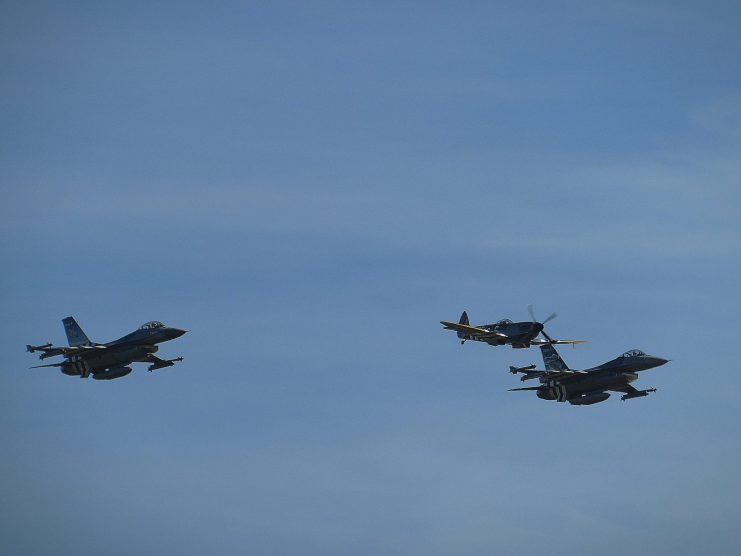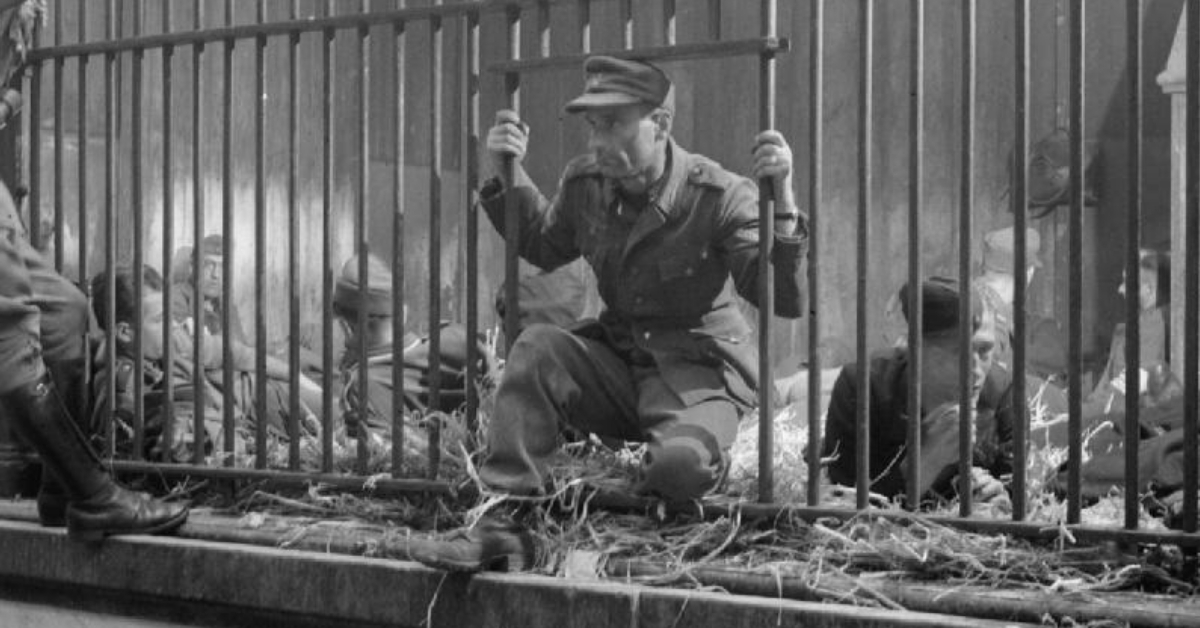September 2019, people all over Belgium are celebrating the 75th anniversary of its liberation from Nazi Germany during the Second World War.
75 years ago, Belgian citizens first welcomed their Allied liberators after living under a repressive, dictatorial regime for four years.
Due to the disarrayed German retreat after their defeat at Falaise and the aid of the Belgian resistance, the Allied forces spread through the country like wildfire. However, many incidents and fierce battles occurred which tend to be lost in the bigger stories of history.
This article is structured in two parts. First, I describe the main events occurring during the liberation of Belgium in September 1944.
It is not my intention to give a complete overview of all developments starting from the closure of the Normandy campaign and the start of Operation Market Garden.
I will rather outline the main acts of the campaign and focus on parts of the story of which I am most knowledgeable.
Part two of the article displays some of the events and commemorations organised for the 75th anniversary of the Belgium’s liberation.
The liberation of Belgium: A short history
A swift British advance towards Brussels
The liberation of Belgium started on the morning of September 2, 1944. After a single American motor rider crossed a small creek near La Glanerie, he is greeted by an enthusiastic mob displaying a Belgian flag.
He had not realized that the small stream called “L’Elnon” he had just passed, defined the Belgian-French border.
After asking why these villagers didn’t raise a French blue-white-red banner, the G.I immediately made a right turn and headed back the way he came, as he didn’t receive orders to cross the border!
Only minutes later, elements of the American forces start crossing the French-Belgian border in the province of Henegouwen, quickly mopping up any remaining German resistance.
The British Guards Armoured Division was ordered to advance to the Belgian capital of Brussels on September 3rd. Exactly five years after the Belgian-German declaration of war, the British motorised troops started their 14-hour advance of around 120km.
That same day in Brussels, the remaining German troops and officials tried to burn incriminating evidence and documents before hastily leaving the city.
While during the day small skirmishes occurred between the resistance and retreating Axis forces, the liberation of Brussels was finally completed when British tanks entered the capital on the evening of September 3rd.
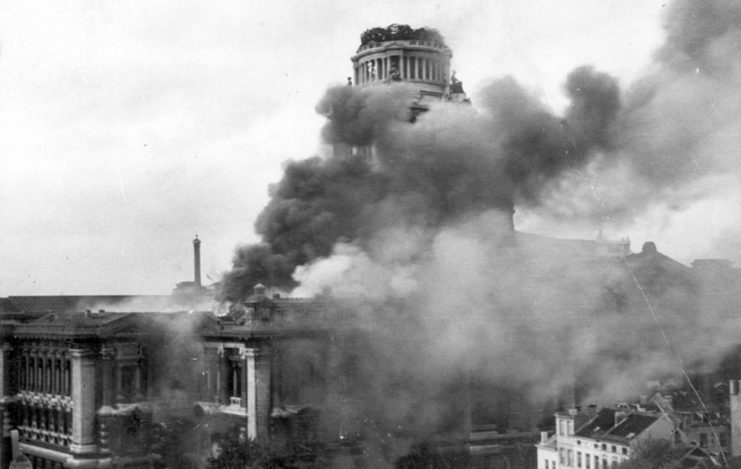
The Brigade Piron
The Brigade Piron, a Belgian squadron, also partakes in the liberation of Brussels and receives a warm welcome by its citizens.
This brigade was completely made up of Belgian soldiers that escaped Dunkirk four years earlier or answered the Belgian government’s call to arms to its citizens around the world.
Formerly known as the “first Belgian Independent Group”, the company was renamed to “Brigade Piron” after major Jean Piron took over command.
The unit counted around 2200 men and fell under British command. They saw first action in August 1944 during the Normandy campaign where they performed various combat actions and liberated several villages.
When the Allied advance moved towards Belgium after the capture of Paris, British command gave the Brigade Piron the honour of liberating their capital of Brussels. They received a warm welcome when they entered the city on the September 4th.
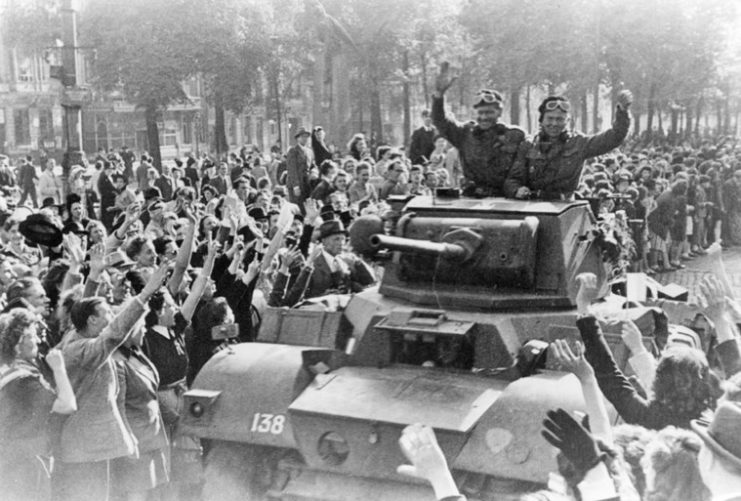
Shortly afterwards, the brigade departs for the Netherlands under Operation Market Garden. It remains in operation in southern Netherlands until after 100 of active combat, when the unit is finally relieved.
After the brigade is reinforced, it is restructured and baptised the “1ste Infanteriebrigade Bevrijding” (1st infantry brigade Liberation). The unit took part in a second campaign during the liberation of the Netherlands in April 1945.
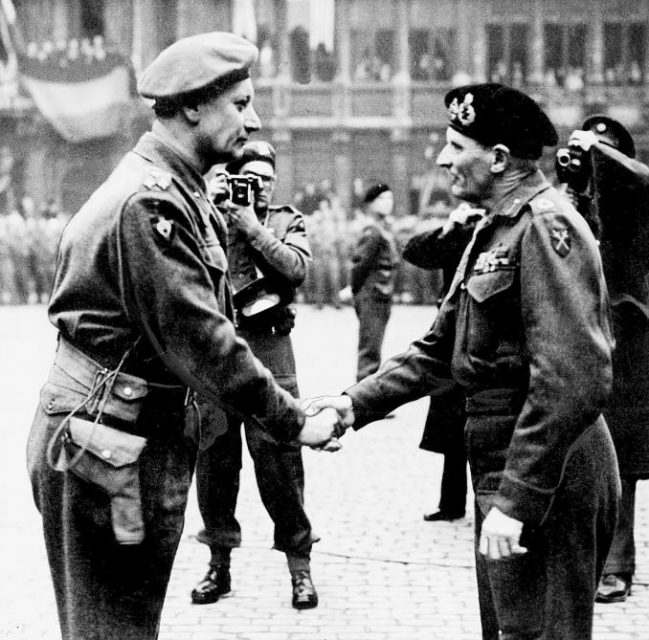
Antwerp: The city of sudden Death
While the British Guards Division was busy liberating Brussels, the 11th British Armoured Division was on its way to a strategically important destination: the city of Antwerp.
Due to its deep ports that could accommodate large ocean-faring vessels, capturing Antwerp intact would solve many of the Allies’ supply problems.
The allied forces were still dependant on their initial avenues of supply in Normandy and the lack of a short, efficient supply chain was starting to slow back the allied advance.
Since many French port cities were still under German control or destroyed beyond use, Antwerp’s harbour was planned for supplying troops, equipment and munitions for the final assault on Nazi-Germany.
As the British vanguard sped through Belgium, the Belgian resistance had already taken measures and acts of sabotage to prevent the destruction of the harbour.
They had been warned by a coded message on BBC, resulting that approximately 90% of the harbour was miraculously captured intact.
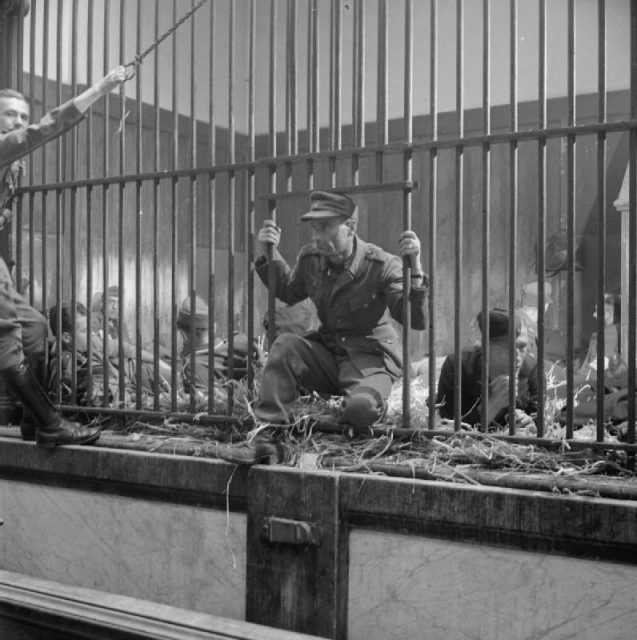
However sweet this victory was, it took another two months until the shipping route to Antwerp could be opened, as the Scheldt river estuary was still under Germany’s firm grip.
The heavily fortified island of Walcheren, which had previously been declared by Hitler a “Festung” to be defended until death, controlled all shipping routes along the Scheldt River.
After a long campaign including many amphibious assaults and advances through flooded lands, the Canadian First Army was finally able clear the area of any Axis resistance.
After this route was secured, the first Allied convoys could be unloaded at the very end of November 1944.
The Germans retaliated their loss of Antwerp by launching a devastating campaign of bombardments against the city with their new V-weapons.
Nazi Germany’s V-1 jet-propelled flying bomb and V-2 guided missile were first used against London in the summer of 1944. After the Allied invasion of Normandy and the capture of Antwerp’s harbour, the city became the target of a new bombardment campaign.
Between Hitler’s order on the 12th of October 1944 to commence the attacks and the capture of the last launch site in March 1945, more V-bombs had fallen on the province of Antwerp than had hit London.
The terror of the V-weapons saw its culmination on December 16th when a V-2 rocket hit Cinema Rex, killing more than 570 people inside.
After the fine-tuning of the “Antwerp-X” anti- aircraft project, a team of 22,000 anti-aircraft gunners effectively defended the city against V-1 rockets.
Unfortunately, nothing else other than the capture of launch sites could protect Belgian cities against V-2 rockets, which impacted at a speed of more than 3000km/hour. As an important industrial and transportation hub, the Belgian city of Liege was also a target amidst the terror of V-weapons.
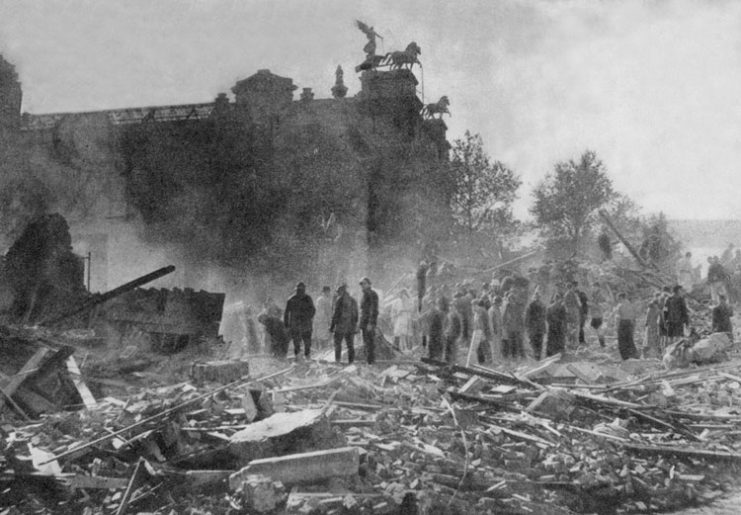
The Belgian resistance prepares for liberation
When Allied forces advanced towards the Belgian border at the end of August 1944, Belgian resistance units became more active to prepare for their arrival. While they operated cautiously, aware of the better armament of the Axis troops and the fear of civilian reprisals, multiple incidents occurred when groups gathered on the countryside.
Losses in resistance groups were especially high in more remote parts of the country, which had to wait longer for liberation.
One example is the incident at Dilsen-Stokkem, where around 1500 members of the “Geheim leger” (Secret Army) resistance group gathered in a countryside forest on September 5th. After five days, most participants left because Allied forces had not yet arrived and bad weather.
German forces surrounded the remaining 200 partisans. Many members of the resistance were killed during the heavy fighting that broke out, while several others were executed later or sent to concentration camps.
Other incidents occurred around the country when resistance groups became reckless while aiding Allied troops or openly committed acts of sabotage.
However, their actions in September 1944 were very useful and contributed to the fast liberation of the country.
They ensured the intact capture of important bridges and the docks of Antwerp, Zeebrugge and Ghent, destroyed Axis material and captured remaining German troops.
Due to their excellent knowledge of the local countryside, they helped Allied troops find intact bridges and evade German positions.
In total, Belgian resistance captured some 20,000 Axis soldiers while thousands were wounded or killed since the end of August.
Their achievements came at a cost; around 1000 Belgian partisans were killed during Belgium’s liberation. In comparison, around 2000 to 3000 Allied soldiers lost their lives during their advance through Belgium.
The Battle for Mons: A Belgian Stalingrad
While the rapid Allied advance crossed the northern part of Belgium, stiff German resistance was encountered around the city of Mons close to the French border. This city was on the path of a major German retreat route.
When the fast advance of the US 3rd Armored Division threatened to close these routes, many German divisions became entrapped in and south of Mons.
Between September 2 and 5, 1944, ferocious battles occurred all around the area. There was no clear front line, but many isolated German pockets defended their positions or tried to break through to the east.
While American Sherman tanks engaged the German panzer forces, which covered the retreat, the Thunderbolts of the US Air Force rained death and destruction amongst the Axis positions. The outcome of this bloody battle was devastating.
While many German forces defended their positions to death and enormous amounts of heavy equipment were destroyed, the American 3rd Armored Division counted around 10,000 prisoners of war. Another 17,000 were neutralised by the US 1st Division while clearing the last resistance pockets. Roads and fields in the area were littered with wrecks of destroyed vehicles.
As the British advanced further through northern Belgium towards Brussels and Antwerp, the Americans focused on the southern and central parts of the country. German strategy focused on defensive lines along many rivers in southern Belgium. However, the fast American advance was slowed down more by a lack of fuel and supplies than by well-organised German resistance. In a little more than a week, they reached the German border in the east of Belgium and Luxemburg.
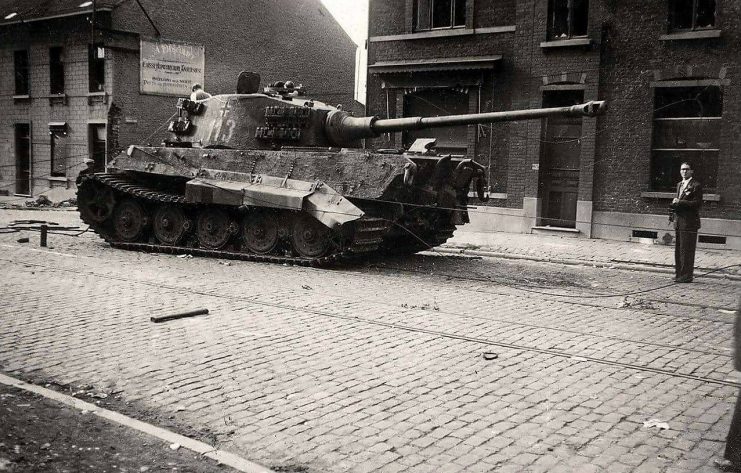
Stiff German resistance at the Albert Canal
After the Allied vanguard booked major advances through Belgium, German troops regrouped behind the Albert canal. This large waterway ran across the eastern border of Belgium connecting Antwerp and Liege and served the same defensive purpose when Nazi Germany invaded Belgium four years earlier.
When the German general Chill reached the city of Herentals near the canal, he decided to halt all retreating German units crossing the waterway and reposition them behind the canal in defensive positions. Kampfgruppe Chill was born. They blew up the canal’s bridges and awaited the arrival of Allied forces.
The defending German forces were reinforced with the newly formed 1st Falschirmarmee. These once feared parachute forces didn’t resemble much of their predecessors; they counted only limited numbers of veterans and consisted mainly of newly formed battalions without much combat experience.
They were joined by tank destroyer units transferred from the Netherlands, which included heavy jagdpanthers. The British supreme commander Montgomery ordered his armoured columns to halt between September 4 and 6, 1944, since their supply lines were thinly stretched due to their rapid advance.
This however enabled the retreating Germans to escape being cut off and dig in behind the canal. As historical opinions differ on whether the British still had capacity to advance even further, this order to halt is often perceived as a strategical blunder, similar to Hitler’s “Halt Befehl” in 1940 that allowed Allied troops to retreat from Dunkirk. It took some time before the British spearheads managed to push back Axis forces towards the Dutch and German borders.
The battles for the bridgeheads were savage, as the Germans understood the importance of this defensive barrier covering their retreating troops. For this reason, they undertook several intense counterattacks. One example is the battle for the Geel bridgehead, one of the largest and bloodiest battles to occur during the liberation of Belgium.
The British captured positions across the canal after two days of heavy fighting, finally allowing troops and armour to cross and reinforce the battered troops. However, repeated German counterattacks by Falschirmjäger and tank destroyer units recaptured Geel and pushed back British troops to their initial positions.
The city’s population suffered greatly as savage house-to-house combat occurred to clear out fortified positions. Despite their initial success, the Germans pressed their counterattack too far and had to retreat from the city a second time after enduring severe losses. It was only after the Germans retreated behind the Maas-Scheldt Canal after fearing encirclement from other bridgeheads that further territorial gains were made in this area. After the city was finally captured, the battle continued in the nearby town of Ten Aardf.
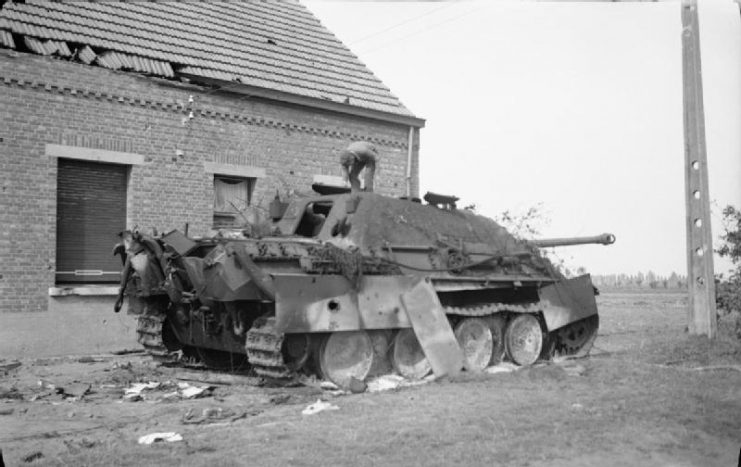
After British troops secured a bridgehead on the other side of the Albert Canal at Beringen; their new objective was to advance further to the Dutch border. The small town of Hechtel lay directly on their road to the Netherlands. As an important crossroads, Axis forces understood the strategic importance of this town and were determined not to retreat.
The initial British assault on September 7 was repelled by concentrated German anti-tank fire. It took six days to capture Hechtel, after which the burned out, ruined city was littered by tank wrecks. The local population suffered dearly, as many civilians were executed under suspicion of being partisans.
When the fighting in Hechtel was still raging on, the British “Irish Guards” division was able to bypass the area and capture an intact bridge over the Maas-Scheldt Canal, the new German line of defense, by surprise. This bridge near the city of Lommel was named “Joe’s Bridge” after the commander of the Irish Guards; John Ormsby Evelyn Vandeleur (initials J.O.E.).
The seizure of this bridge meant that remaining German troops at Hechtel were cut off from supplies and reinforcements. After several attempts, they were unable to recapture this important strategic important bridge.
One week later, Joe’s bridge became the bridgehead from where British troops departed on the offensive towards the Netherlands under Operation Market Garden. After the Dutch border was reached by Allied troops, only few territories remained under German control until all were liberated in the following weeks.
Nonetheless, the war was far from over for Belgium, as in December 1944, Nazi Germany would once again launch a desperate offensive through the Belgian Ardennes. It was only after this attack was repelled, that peace was finally restored to the country.

The 75th anniversary of the Liberation of Belgium
In September 2019, Belgians honor the liberation of Belgium by organizing celebratory and commercial activities across the country. While larger cities such as Antwerp play host to an amazing offer of activities such as air- and boat shows, re-enactment encampments, lectures and vehicle parades, also the smaller towns of Belgium honor their liberators and remember the personal histories of those who lived through it.
The province of Limburg, which lies next to the Dutch border, suffered greatly during the invasion and retreat of German forces. Its capital of Hasselt endured a harsh repressive regime and was bombed several times by Allied planes, which targeted its railroad system in preparation for the Normandy campaign.
On September 7th, the people of Hasselt welcomed the US 2nd Armored “Hell on wheels” Division with open arms to their city. The division stayed in town until December, when their presence was needed to stop the Axis advance in the Ardennes. During their stay in Hasselt, the American G.I’s developed good relations with the local people and were honoured for their help.
On September 7, 2019, re-enactors from all over Europe recreated this event featuring 75 World War Two vehicles and 250 people dressed as G.I’s and civilians. Commemorations were held and a victory column paraded through the city.
Even small towns such as As near Genk remembered the events that occurred during September 1944 and hosted a large-scale recreation of its liberation. A large group of reenactors progressed through the small town, replaying every incident of those final days of occupation. Belgian resistance fighters were captured, civilians guided the Americans through the streets or were held hostage by retreating Germans. A final battle also occurred in front of the town church.
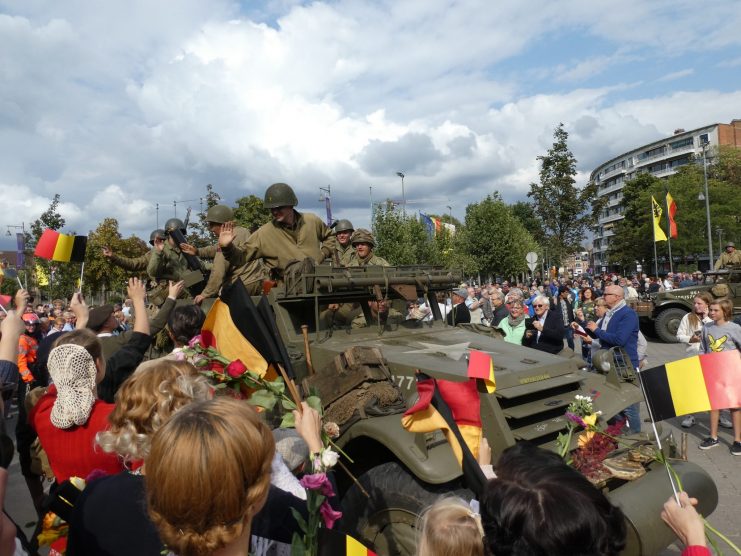
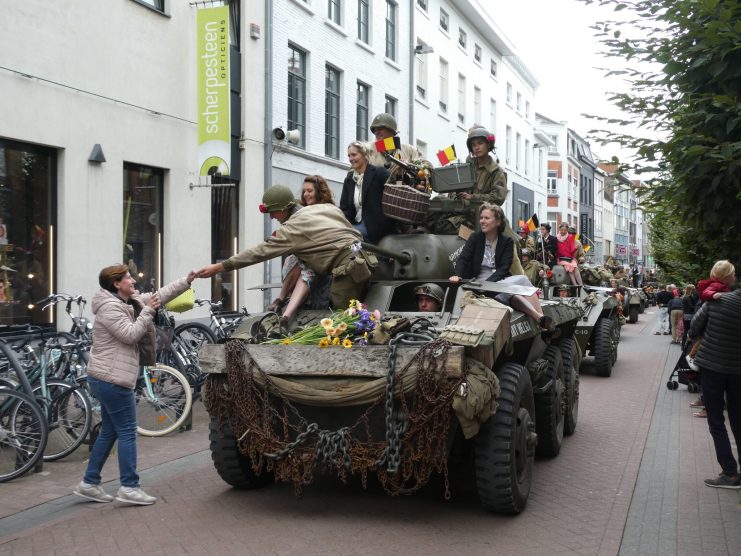
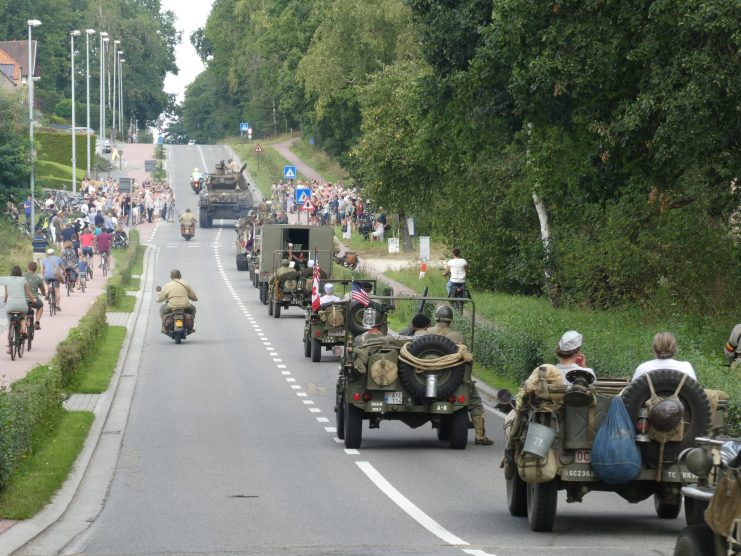
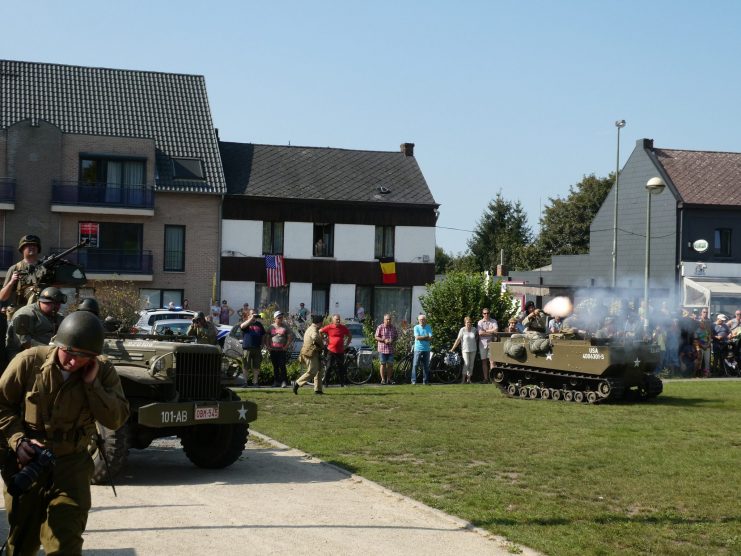
As part of the official 75th anniversary of the Liberation of Belgium activities, a column of historical World War II vehicles crossed Belgium and liberated its cities once more. Historical vehicles of the War Heritage Institution in Brussels, privately owned vehicles and modern vehicles of the Belgian army joined the group.
Many of these actually took part in the liberation. The column drove from Mons through Brussels and Antwerp until finally reaching Leopoldsburg. As it entered Belgium’s cities, fascinated crowds gathered around the vehicles and many commemoration activities and victory parades were organised.
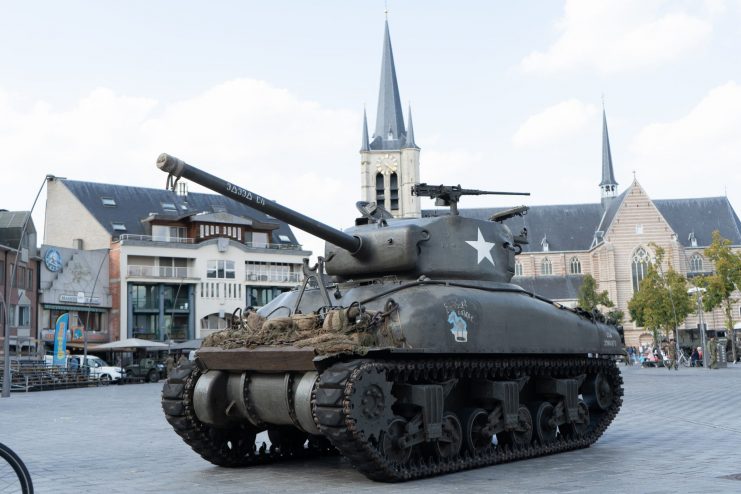
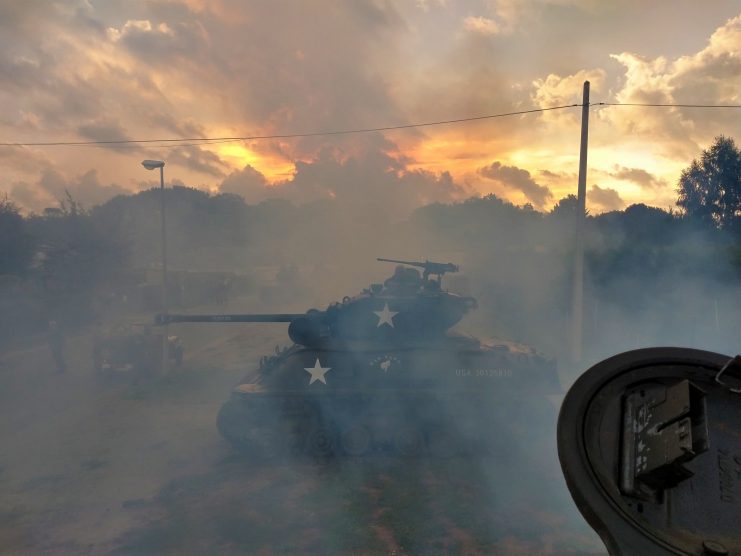
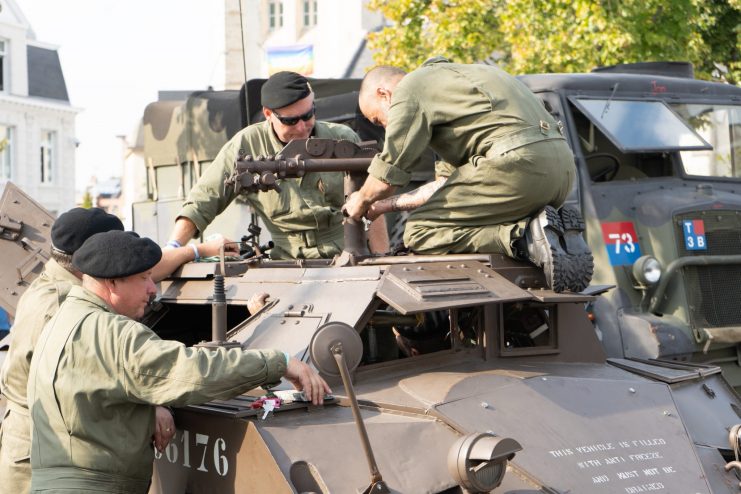
The Liberation column crossed Belgium until it finally reached Leopoldsburg. This city played an important role as starting point of Operation Market Garden in September 1944
. It was in the local cinema named “Splendid” that British officer Brian Horrocks gave his famous briefing, memorialised in the blockbuster “A Bridge Too Far”.
Also in September 2019, the city played a key part in both the Belgian and Dutch remembrance programme. A grand Liberty ball and victory parade were held. The Dutch Operation Market Garden initiative “OMG2019” also chose this city as its starting point. OMG2019 features a grand column of hundreds of historical vehicles following the original campaign’s route into the Netherlands.
Even the locally organised International Sanicole Airshow featured the only remaining B-17 bomber in Europe, “Sally-B”, to commemorate the end of World War II in Belgium.
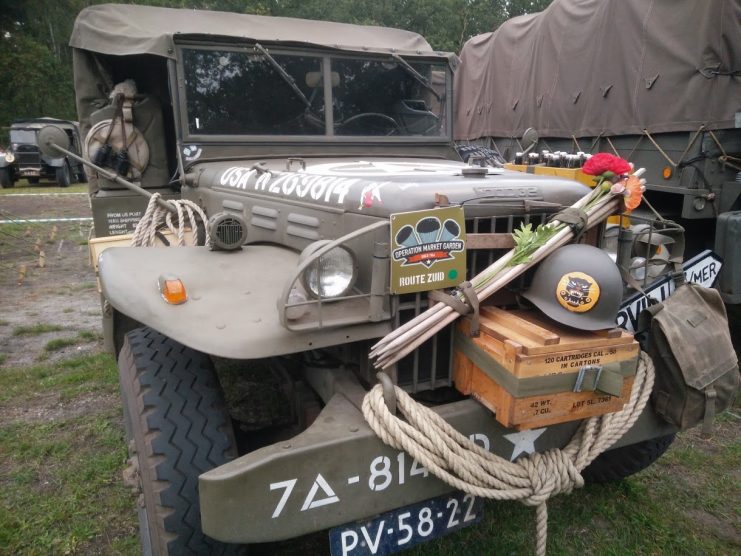
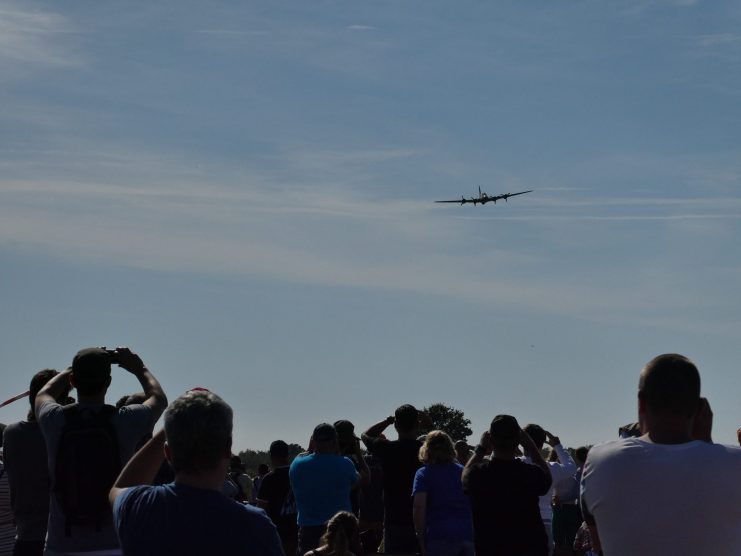
Another Article From Us: Grumman TBF Revealed in Amazing Seabed Images
